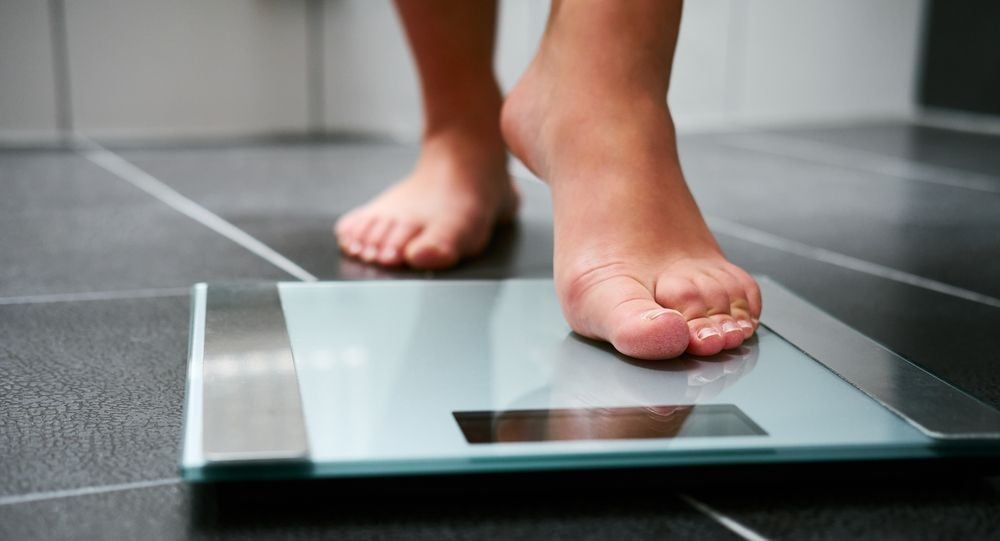How to Track Muscle Gain: 7 Red Flags Your Workout Sucks

You’re missing a ton of gains when you don’t track gym progress properly. Learn how to leverage tracking to maximize muscle mass!
Learn From the Pros: How Do Bodybuilders Track Progress?
Gaining muscle past the newbie gains is not easy. It takes a lot of time and effort. The last thing you want is to waste months barely making any new gains.
Proper training and rest management will get you far. You need to have a system and clear goals. Don’t try to wing it. Training is challenging. It tests your body and willpower. You’ll naturally want to hold yourself back.
This is why top bodybuilders structure their training. This means having an actual workout plan. Knowing what you’re doing each day of the week. Having targets you need to hit. A good program also has some level of flexibility. Schedule changes, sickness, and travel can’t always be avoided.
Always going by feel is not a great idea. You don’t want to switch exercises all the time. Or to manage weights and reps based on subjective feelings. It’s a good way to have fun workouts. But you’re probably not building a lot of muscle.
Disclaimer: Having a great body doesn’t mean you know how to train properly. Some people have amazing genetics. They may be able to build great physiques despite suboptimal training. Don't blindly follow fitness celebrities. See what works universally for most people. Start from there. Then think about personalizing your workout plan.
What Are the Most Common Training Mistakes?
Apart from not having a workout plan, there are other critical mistakes to avoid. We’ve ranked them in terms of impact on your progress. The information is relevant to people who want to build muscle fast. If you’re not that serious about training, don’t concern yourself with the info here.
#1 How to Measure Hypertrophy (Muscle Gain)?
Nearly 90% of people don’t track their workout numbers regularly. Without feedback, you can’t adjust your training. You may spend months stuck on a plateau. It doesn’t really take that much effort to prevent that.
There are multiple ways you can track your workouts:
- Keep a workout journal – Pen and paper, that’s the old-school solution. You can easily review previous workout performance and try to do a bit better. You can also analyze trends and figure out when it’s time to take it easy.
- Use a workout log app to track progress – Same idea. Just a bit more convenient. Some apps may even adjust your workouts. They may suggest new targets based on past performance.
- Do occasional strength or work tolerance tests – You can occasionally perform 1 rep max tests. Or see how many reps you can manage with a given weight. Though for such tests to be reliable they have to be preplanned. Even then a number of variables (e.g. sickness, poor sleep, etc) can affect performance.
Self-monitoring progress by tracking performance is super easy. You only need a notebook or a smartphone. That’s why it takes the number one spot. It’s very accurate, time-efficient, and essentially free.
Do You Have to Lift Heavy: Is It Better to Increase Weight or Reps?
There are different ways you can evaluate progress:
- You may be able to handle heavier weights for a given number of reps.
- Do more reps with the same weight.
- Sometimes reps and weights might remain the same while sets increase.
As long as you can handle more total work (weight, reps, and/or sets) you know you’ve building muscle. Though other training variables like exercise execution, tempo, or rest times can also be manipulated to make things harder.
However, don’t hyperfocus on the exact numbers. You may have been able to increase weights by 5 lbs a week during your first 2 months of training. But progress slows down with time. It may take a couple of weeks to add 1 lb once you get advanced.
Sometimes it takes a while to see changes in strength. You might have to analyze and compare mesocycles (~1-month periods) instead of weeks.
#2 Can You Really Trust the Weight Scale?
The scale is one of the best tools to track diet progress. Body composition changes almost always come down to weight changes. Something you can easily measure using a scale.
However, bodyweight changes don’t always reflect body composition changes. Muscle growth is (usually) a slower process than fat loss. Regular scales register the total sum of muscle, fat, and water level fluctuations.
Total bodyweight might be increasing because:
- You’re gaining a lot of body fat and no muscle.
- You’re gaining a good amount of muscle and a bit of fat.
- Gaining both body fat and muscle.
Total bodyweight might be decreasing because:
- You’re losing a lot of body fat.
- You’re losing body fat and muscle.
- Pure muscle loss might happen sometimes, but it’s very rare.
Note that occasional weight fluctuations are normal. Water retention and bowel movement have a notable effect on weigh-ins. To reduce the noise do multiple weigh-ins throughout the week. Then take the average. Compare it to the average weight of the previous week.
Are You Gaining Muscle or Fat?
If you’re actively losing weight the scale can’t measure muscle gain. The total body weight change (muscle + fat) will always be a negative number. Let’s say you gained 1 lb of muscle and lost 6 lbs of fat. The scale will show a 5 lbs change in weight. But you have no idea of the exact muscle gains.
However, you can trust the scale a bit more when bulking up. Note that some fat gain is inevitable. Gaining pure muscle is almost impossible.
Realistic weight gain goals:
- Complete newbies should aim to increase their current weight by 1% a week.
- Intermediate lifters should aim for 0.5% weekly increases.
- Advanced lifters can go for 0.25% weekly or 1% monthly increases.
Example: an intermediate lifter who weighs 170lbs can expect to gain about ~0.85 lb a week.
By staying within those ranges you optimize muscle growth. A more aggressive weight gain is not recommended. The rate of muscle gain is limited. Most of the increase will be fat tissue. However, going too slow may result in suboptimal gains.
These recommendations are based on optimal training and lifestyle conditions.
Note: Skinny guys can gain weight very fast. However, the rules above still apply if your goal is to avoid excessive fat gain.
#3 How Often Do You Need to Take Progress Photos?
Taking physique photos is a great way to measure progress. Though when it comes to muscle growth this isn’t a very practical strategy. At least not within the time frame of a single bulking cycle.
As you gain muscle you inevitably gain some fat. Over time you get less defined. Aesthetics are negatively affected. Taking pictures when bulking doesn’t help see muscle increases. You do see the fat build-up though. Or if you’re losing weight, photos really help visualize fat loss progress.
This doesn’t mean you shouldn’t take pictures when bulking. You can compare results during different periods of bulking phases. You can focus on body composition changes at the same weight. Or notice how weight changes at the same body fat percentage.
For example, let’s say you had somewhat visible abs at 180 lbs last year. This year you have a solid six-pack at the same weight. This means you’ve gained more muscle and lost some fat.
Or you’re the same body fat level as last year but at a higher weight. Still somewhat visible abs, but you're now 185 lbs. This means you’ve gained 5 lbs of muscle.
Taking progress pictures is mostly a long term strategy. At least if we’re talking about muscle building.
#4 Should You Take Body Measurements?
There are different ways to take body measurements. You can use a tape measure or even a caliper. You can also choose to measure different body parts or just a couple of places.
Yet you face the same problem you have with the scale. Measurement changes reflect global bodyweight changes. It’s very hard to track body composition changes.
Even when bulking, taking measurements is less accurate weighing yourself. The main issue is the accuracy and consistency of technique. The error margin can be high with most conventional tools. That may happen when you tighten up or loosen up the tape measure more than the previous time. Or if you place the tape slightly off the target area. The same is true for calipers.
Taking body measurements serves the same purpose as tracking body weight. Mostly useful for tracking weight loss. It might be an okay way to track muscle gain when bulking. However, this approach has a greater error margin. Also, it’s less convenient and more time-consuming.
#5 Are Body Composition Scans Worth the Money?
Modern technology allows us to easily estimate body composition. Some of the most popular ways to do that include things like:
- DEXA scans
- MRI scans
- Hydrostatic Weighing
- Air Displacement Plethysmography (Bod Pod)
- Bioelectrical Impedance Analysis (InBody)
- Some weight scales can also measure body composition
Most are fairly accurate. Though there’s always a notable error margin. Estimates can be off by 3-5% or more. Nothing too crazy, but you shouldn’t trust the values completely. But for the purpose of measuring progress over time, the error margin is mostly irrelevant.
Whether your total muscle mass is 100 lbs or 110 lbs doesn’t matter. Regardless of the base value, an increase in muscle compared to your previous measurement is a sign of progress.
However, the issues with most of these tools are the price and convenience. The more accurate the tool, the less accessible it is. Most people can’t easily do something like an MRI scan on a weekly basis.
#6 How Do You Eliminate Tracking Errors?
None of the tracking tools mentioned here are completely accurate. It’s almost impossible to measure the exact amount of muscle gain. There are too many variables that affect measurement values. Some of those include:
- water retention
- bowel movement
- daily diet choices
- stress (physical and/or mental)
- sickness and medical conditions
- the measurement tools used
- the technical proficiency of the person taking the measurement
Also, the amount of muscle you add decreases with time. The more advanced you get, the less muscle you can grow. However, you don’t really need to know the exact numbers.
But it’s super important to make sure muscle growth does occur. That’s why progress tracking is important. Tracking should be accurate enough so random noise doesn’t make it hard to see progress.
Make sure all measurements are done under similar conditions. Here a few general tips:
- Measure progress during the same time of the day.
- Make sure food choices and water intake are identical each time.
- Avoid taking measurements when stressed out or sleep-deprived.
- Don’t expose yourself to excessive heat or cold.
- Use the exact same equipment, tools, or system each time.
- Take multiple measurements if possible (write down the average values)
#7 How Long Does It Take to Build Noticeable Muscle?
Optimal muscle gain strategies don’t always improve aesthetics. You grow the most muscle when bulking. However, that also means adding more body fat. And having great aesthetics comes down to being lean.
Unfortunately, muscle growth is slower during fat loss periods. So you might have to go through a couple of cutting and bulking phases to achieve the look you want.
Most people can achieve an aesthetic body within several months. Though to build a truly ripped physique can take 2 to 5 years. If you're severely overweight or unnaturally skinny have realistic goals. It will take longer to achieve your body goals.
Note that this requires consistency. And you still need to optimize your diet and workouts. Progress tracking really helps with that. You can adjust your approach relying on solid data. This way you can maintain a maximum rate of progress.
What Is The Most Effective Way to Track Progress?
Ideally, you combine different approaches. Consistently log your workout performance. Weigh yourself at least a few times a week. Occasionally take pictures and body measurements. If you have access to more advanced tools try those as well. Do a body scan at the beginning and/or end of bulking and cutting phases.
Once you compile enough data you get a pretty accurate picture of your progress rate. Over time you’ll learn how far you can push it. You’ll also find out the minimum training threshold below which you stop growing muscle.
Want To Take Your Fitness To The Next Level
Are you serious about getting the best out of your training sessions?
You might be a fit for the Fitness Mastery mentoring program. Here's how to apply:
Step 1 - Book a Free Assessment Call
This is a complimentary session where we will talk about your goals and tell you what you need to get there.
Step 2 - If you're a good fit to join our mentoring program you will be invited.
Click the button below to get your free assessment.




